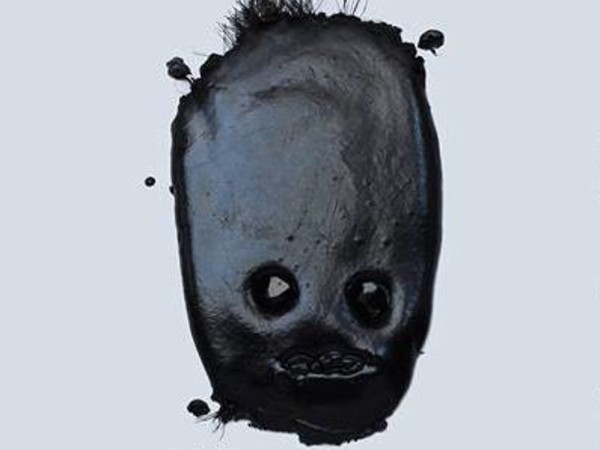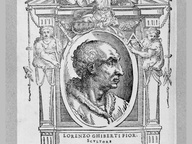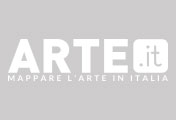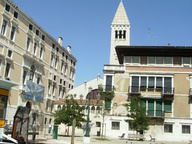Hidden Beauty

Hidden Beauty, z2o Sara Zanin Gallery, Roma
From 24 Marzo 2018 to 19 Maggio 2018
Rome
Place: z2o Sara Zanin Gallery
Address: via della Vetrina 21
Times: from Tuesday to Saturday 01pm-07pm or by appointment
Responsibles: Marina Dacci, Krištof Kintera
Telefono per informazioni: +39 06 70452261
E-Mail info: info@z2ogalleria.it
Official site: http://www.z2ogalleria.it
z2o Sara Zanin Gallery is pleased to present Hidden Beauty, a group show curated by Marina Dacci and Krištof Kintera with works by Anna Hulačová, Krištof Kintera, Pavla Sceranková and Richard Wiesner.
For the first time a project moves out of the gallery, and scatters works in unexpected places. Often time, Kintera, artist and co-curator of the project, places his works in non-institutional spaces.
The underlying idea would be to offer viewers an itinerary through places which are used for other purposes, with levity and irony, in order to train their gaze to search for beauty that is, so to speak, “within reach”. Because in the end the core matter is always the attitude of the gaze.
In our walking through life, we take for granted what fills our familiar world, and we think we know and can control it by placing every thing in its place and order. Objects, images do not surprise us anymore, or if so only rarely, because they are absorbed and placed in our ordinary and reassuring cognitive maps.
At times however it may happen that we ask ourselves if Beauty, in our everyday life, is a necessary good, and which kind of beauty we do need. And where and how to search for it.
We have asked four artists from Prague, with quite diverse formal research and outcomes, to explore that notion with their works which speak of research postures, but mostly of what Beauty represents for them. The exhibition is a small stage of diverse – and partly complementary – gazes and artifacts which however share a common denominator: the tension and need to rediscover and invent a new form of Beauty every day, to feel being “in the world” and live in it even in unexpected ways.
We are not interested in putting a label to “what beauty is”– much has been written about this topic – but rather in looking with new eyes and discovering the Hidden Beauty which we do not often see or consider as the founding element of our lives.
This is a kind of beauty, at times with capital “B” but most often in lowercase, to be found in negligible details and/or humble settings where our memory, imagination, dream, experimentation help us to render it back with a universal meaning, although through subjective canons, a highly validating and non-stereotypical meaning about what makes us feel that we can live an authentic experience.
For this reason as well, part of the exhibition, for the works by one of the artists, is set as a “treasure hunt” leading to unexpected places to be seen through “new eyeglasses”.
Beauty then could be validating what we call subjective experience lived in full awareness. Beauty could be a fertile encounter, a happy marriage between what is inside ourselves and what surrounds us and comes towards us.
Beauty is the ability to bring poetry and lyricism back to worlds ruled by technological and scientific norms. Beauty means giving a new life to ordinary objects belonging to ordinary lives, making them grow roots and new branches, thus opening a personal and universal reflection on space and time: categories through which we give value to, and measure our lives.
The search for Beauty is – always and in any event– the search for Truth and, because of it, it gives a special meaning to our lives.
The research of Krištof Kintera (1973) focuses on the possible forms of “synthetic” beauty generated by an assembly of waste materials, objects and technological productions to which the artist aims to give a lyrical aura from their original function. In his works, the “natural nature” (which we have irretrievably lost), culture and technology often strike a dialogue with bitter and ironic results within the framework of a deep political and social questioning.
Anna Hulačová (1984) searches for a fertile and reconciling – even though tormented – compromise with the natural and simple world linked to her cultural roots. The results of her research merge past and present by bringing into her work the iconographic elements of old folk traditions and experimental materials linked to modern technology.
Individual experience of the surrounding world, incubation of perception into memory, awareness of perception, all are themes dear to the research of Pavla Sceranková (1980) in an on-going dialogue with scientific research which however does not take the poetics out of her works, often created and assembled starting from everyday objects, at times presented to viewers in an interactive way.
Richard Wiesner (1976) takes up objects found in the house of an old man who regretted having to see them go to waste after his disappearance. So then he encapsulates them, crystallizing and presenting them as lenses through which casting a glance into the memory of an individual life, while also turning them in emblematic artifacts looking at the future.
SCARICA IL COMUNICATO IN PDF
pavla scer nkov ·
kri tof kintera ·
anna hula ov ·
richard wiesner ·
anna hula ov kri tof kintera pavla scerankov richard wiesner
COMMENTI

-
 Dal 31 gennaio 2024 al 04 maggio 2025
Fermo | Palazzo dei Priori
Dal 31 gennaio 2024 al 04 maggio 2025
Fermo | Palazzo dei Priori
-
 Dal 20 dicembre 2024 al 04 maggio 2025
Fermo | Palazzo dei Priori
Dal 20 dicembre 2024 al 04 maggio 2025
Fermo | Palazzo dei Priori
-
 Dal 20 dicembre 2024 al 04 maggio 2024
Gorizia | Palazzo Attems Petzenstein
Dal 20 dicembre 2024 al 04 maggio 2024
Gorizia | Palazzo Attems Petzenstein
-
 Dal 18 dicembre 2024 al 18 dicembre 2024
Venezia | Museo Correr
Dal 18 dicembre 2024 al 18 dicembre 2024
Venezia | Museo Correr
-
 Dal 14 dicembre 2024 al 02 marzo 2025
Palermo | Palazzo Abatellis
Dal 14 dicembre 2024 al 02 marzo 2025
Palermo | Palazzo Abatellis
-
 Dal 12 dicembre 2024 al 23 febbraio 2025
Roma | Palazzo Altemps
Dal 12 dicembre 2024 al 23 febbraio 2025
Roma | Palazzo Altemps


